 |
 |
 |
| |
HCV Increased Risk for MI and Stroke in HIV+, Study Reported at IAC
|
| |
| |
Reported by Jules Levin
IAC Aug 3-8, 2008 Mexico City
From Jules: this only makes sense because fatty liver, insulin resistance, diabetes, and metabolic syndrome are associated with HCV in the general population. As the authors here suggest, this consideration should be factored into studies conducted among HIV+ individuals. These factors also should be considered when thinking about early HCV treatment.
AUTHOR CONCLUSIONS
HAART era: Rates of hypercholesterolemia increased but rates of hypertriglyceridemia decreased
HCV co-infection:
-- associated with lower rates of dyslipidemia
-- associated with higher rates of other CV risk factors
HCV co-infection:
-- associated with a significantly increased risk of AMI (acute myocardial infarction) and CVD in the pre-HAART era
-- this effect appears to decline in the HAART era for AMI, but not for CVD
the impact of HCV on AMI rates is greater for the older age group (see table)
Adjustment for HCV status is indicated when analyzing cardiovascular disease risk in HIV
ABSTRACT
Background: HIV+ patients with Hepatitis C co-infection (HIV/HCV) have been found to have lower rates of lipid abnormalities than those without. It remains unclear whether this affects cardiovascular outcomes. We utilized the Veterans Administration HIV Clinical Case Registry to elucidate the impact of HIV/HCV co-infection on incident cardiovascular disease (CVD) adjusting for traditional cardiac risk factors.
Methods: We used diagnostic codes and HCV antibody tests to identify patients with CVD events and hepatitis C co-infection. We performed logistic regression to predict acute myocardial infarction (AMI) by HCV status in the pre-HAART era (1980-95) and HAART era (1996-2004). In the HAART era only, we performed survival analyses (Cox Proportional Hazard model) to predict incident acute myocardial infarction (AMI) and cerebral vascular disease (CVD), exploring antiretroviral therapy (HAART) as a time-dependent variable.
Results:
HCV co-infection was associated with an increased rate of incident AMI and CVD in the pre-HAART era (unadjusted hazard ratios (HR) and CI: 1.425; 1.183 - 1.716 for AMI and HR: 1.388; CI: 1.240 - 1.554 for CVD.
In the HAART era, we analyzed 19,424 HIV-infected patients (31.6% of which were HCV co-infected) contributing 76,376 patient-years of follow-up.
The event rates, unadjusted and adjusted HR associated with HCV co-infection controlling for diabetes mellitus, hypertension, age and duration of HAART are presented in the following table.

Conclusions: HCV co-infection was associated with a significantly increased risk of AMI and CVD in the pre-HAART era. This effect appears to decline in the HAART era for AMI, but not for CVD.
SLIDES
HCV Co-Infection Increases the Risk of MI and Stroke among HIV-Infected Patients
R. Bedimo1,3, A. Westfall2, M. Mugavero2, H. Drechsler1,3, N. Khanna3, M. Saag2
1VA North Texas Health Care System, Dallas, 2University of Alabama at Birmingham, Birmingham, 3University of Texas Southwestern Medical Center, Dallas, United States
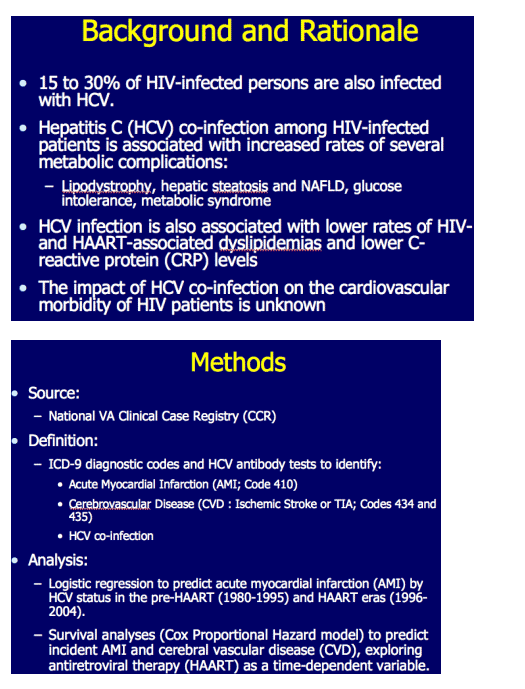
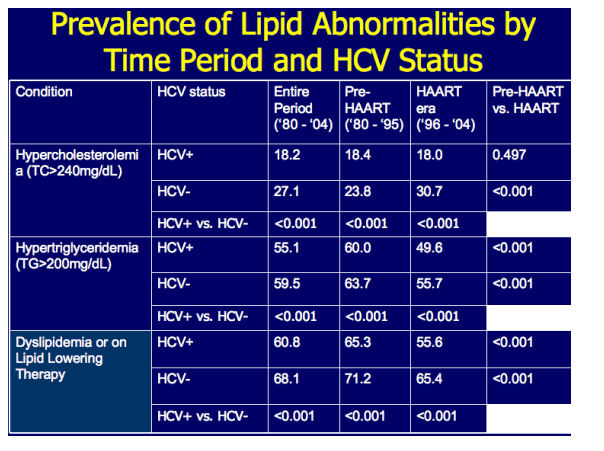
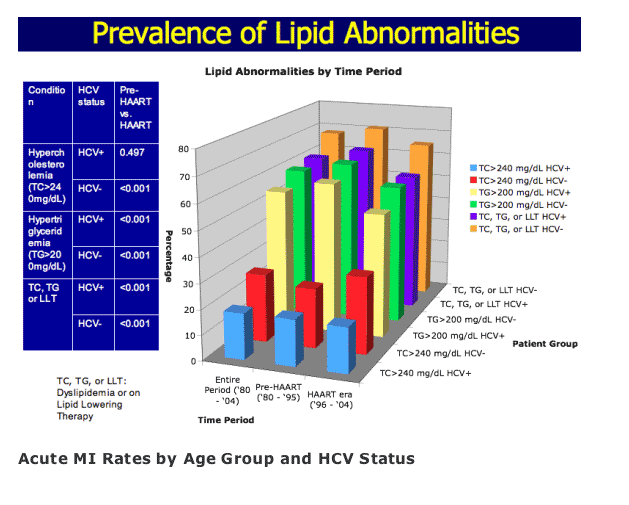
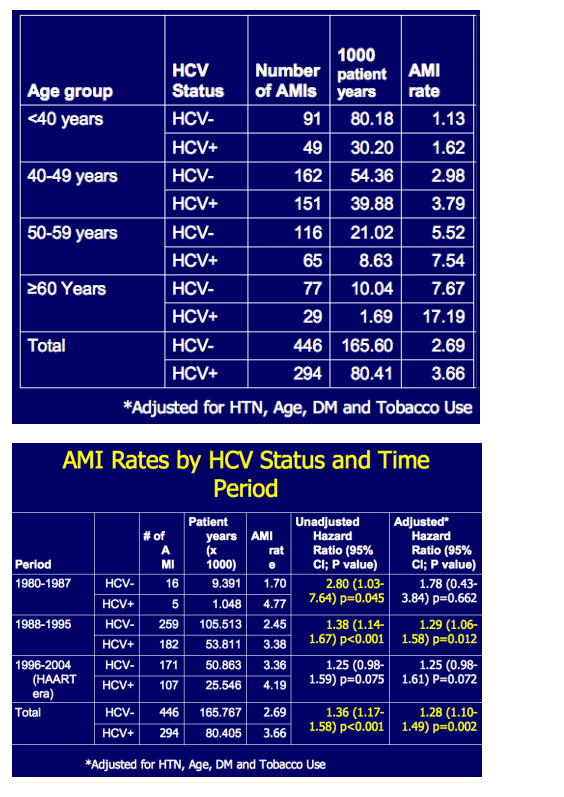
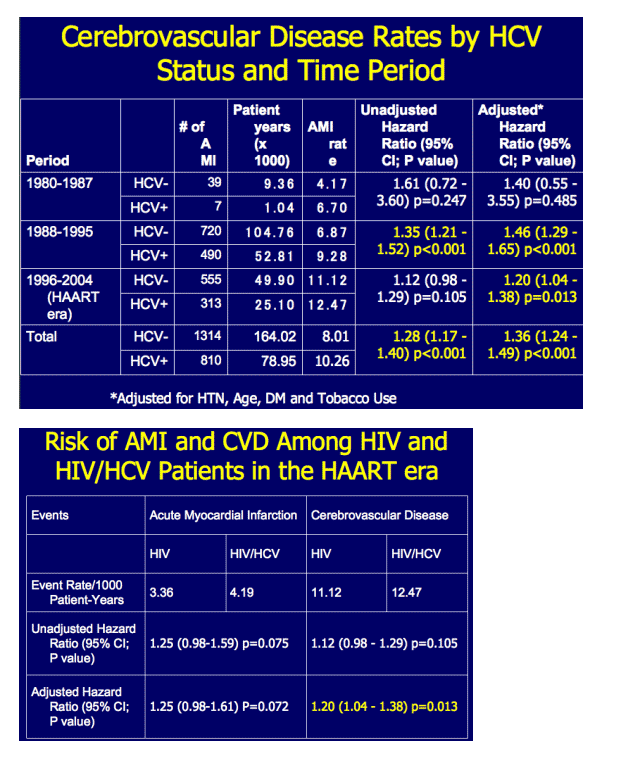
|
| |
|
 |
 |
|
|